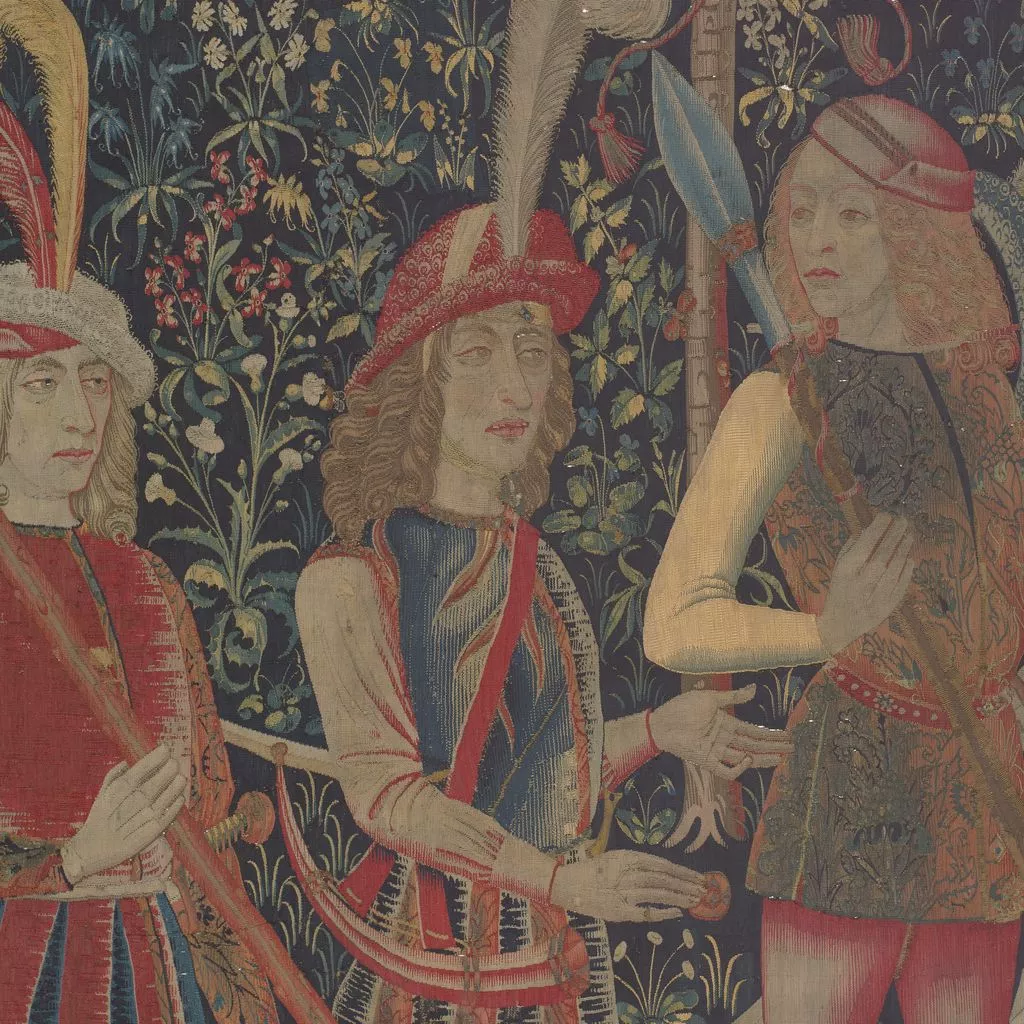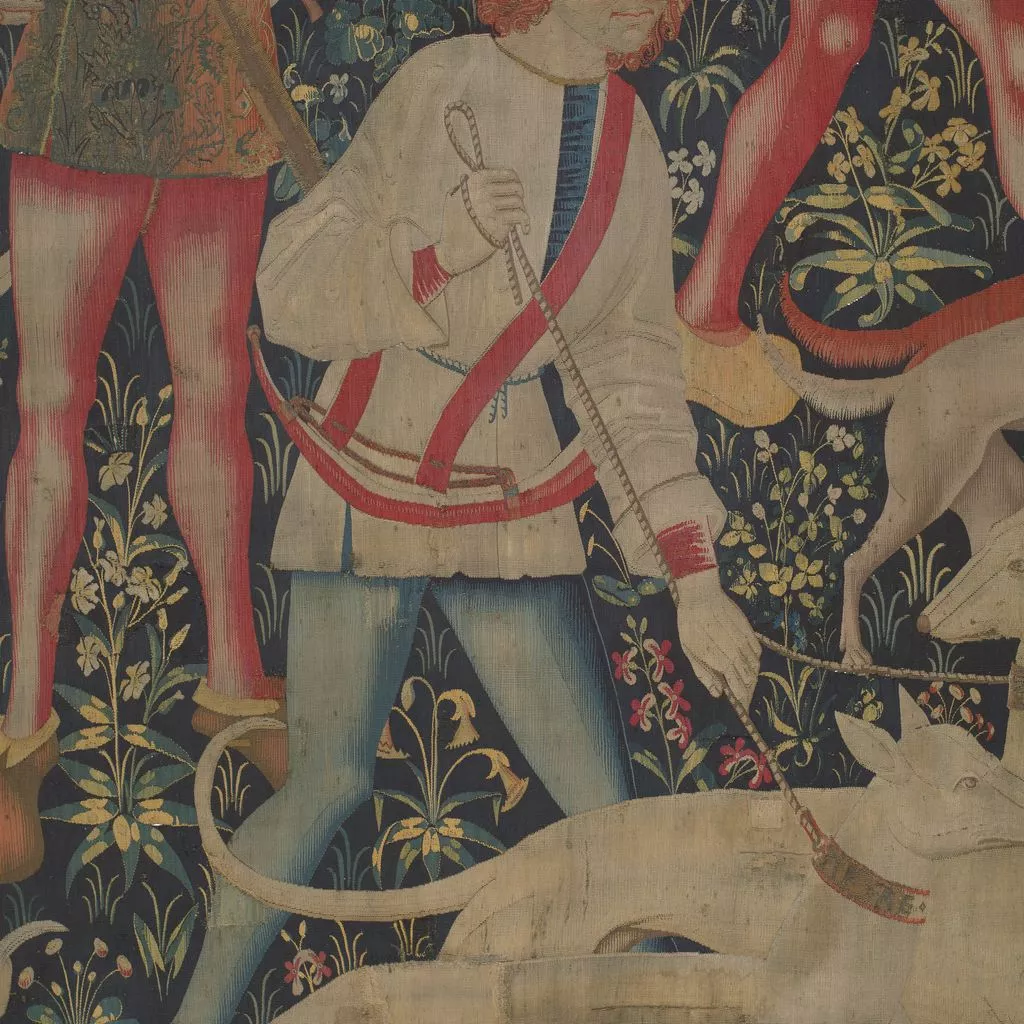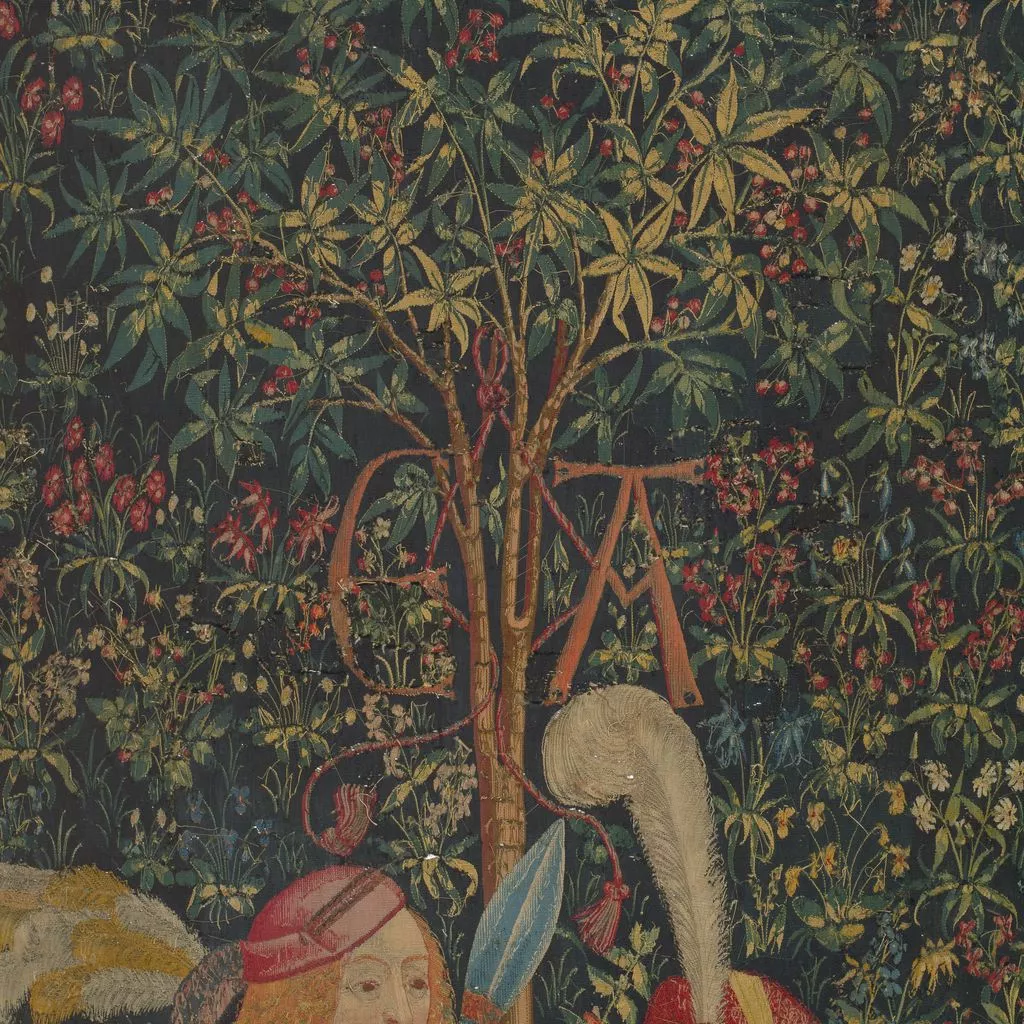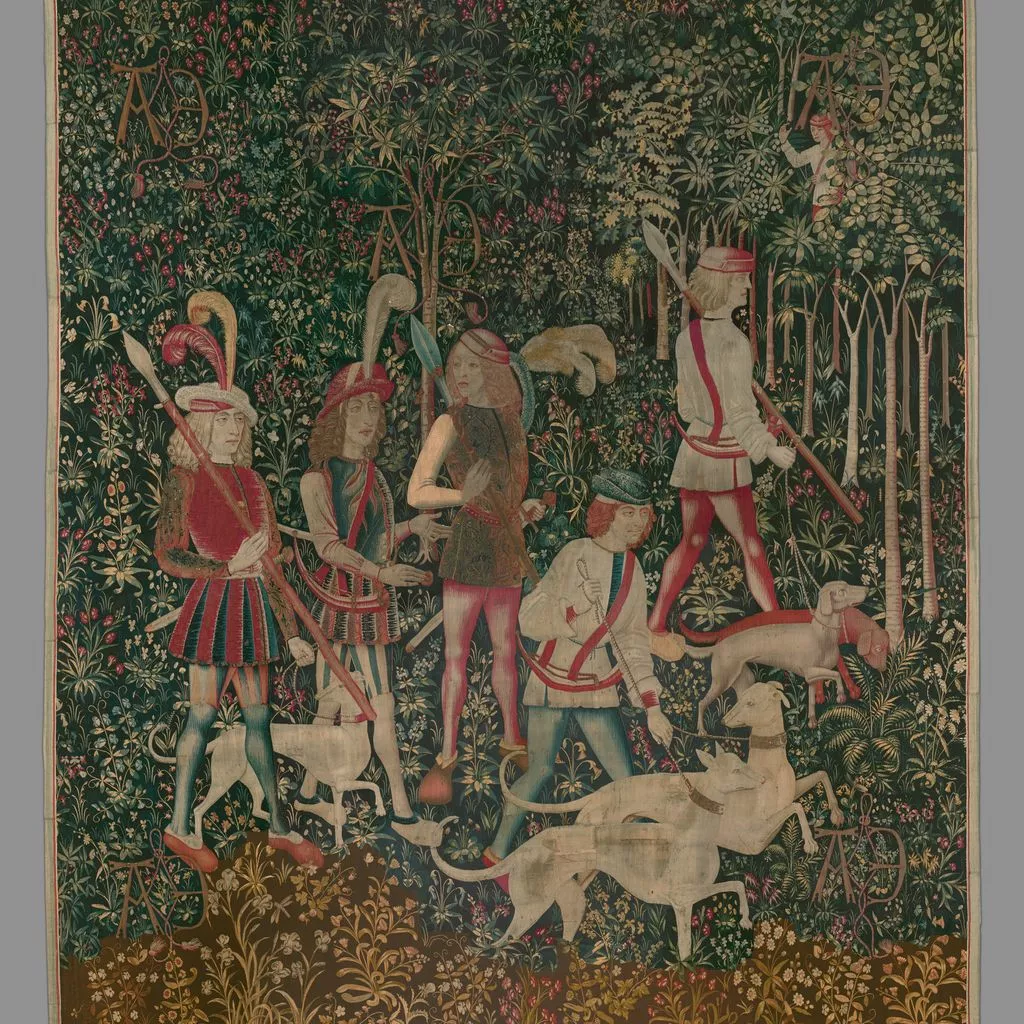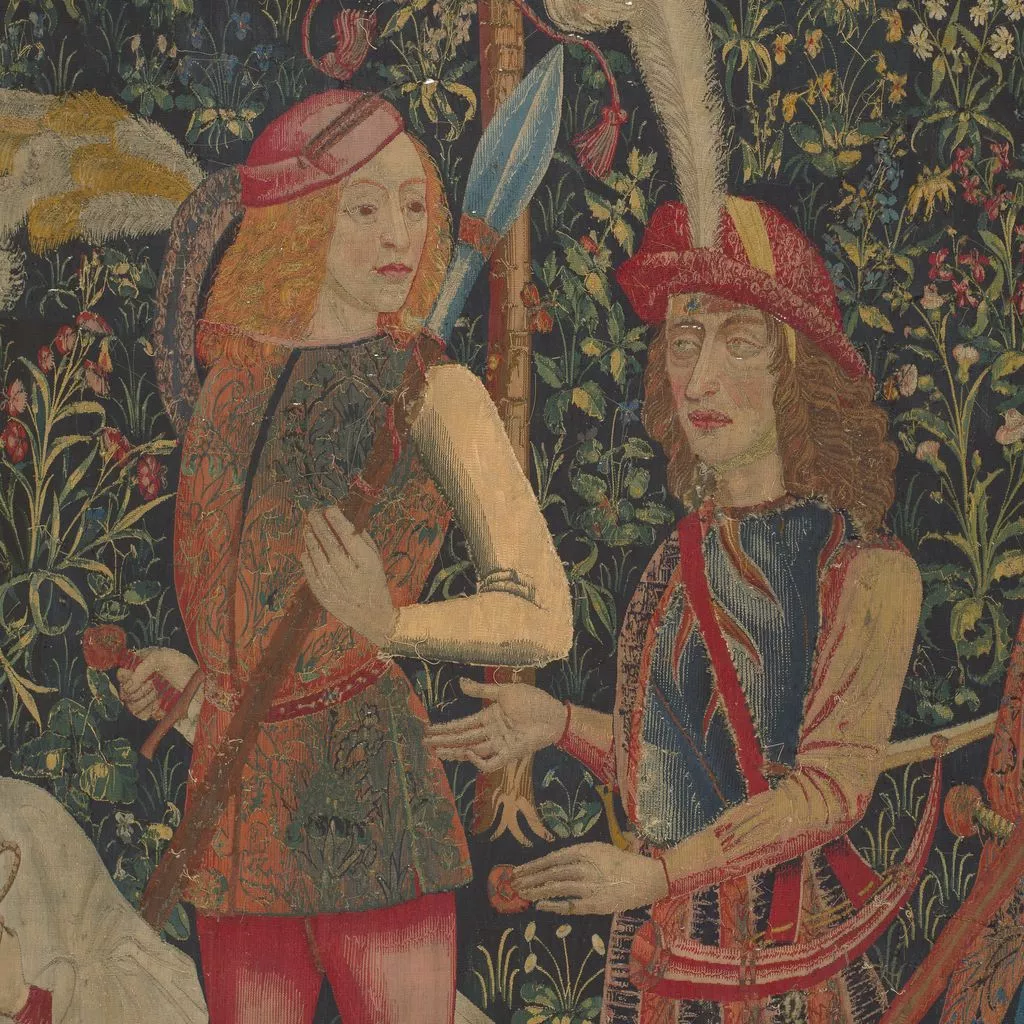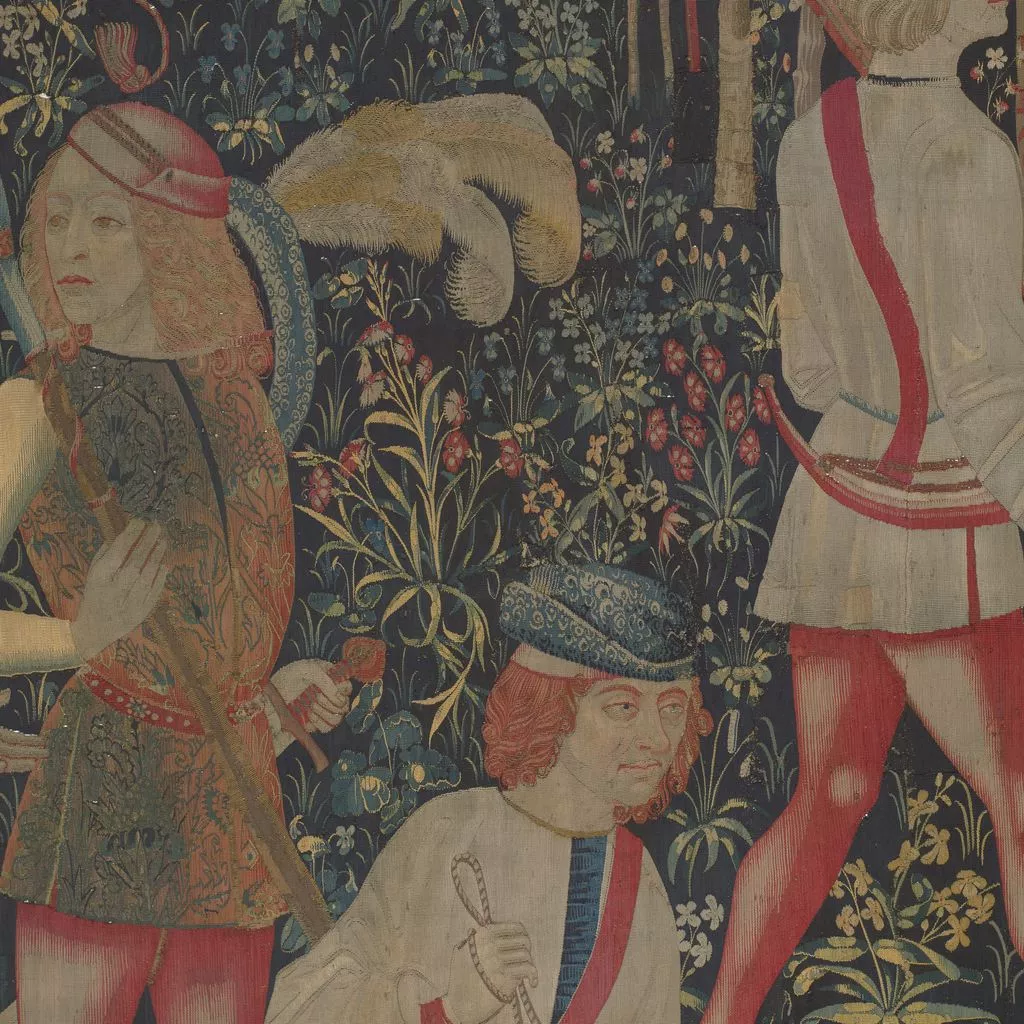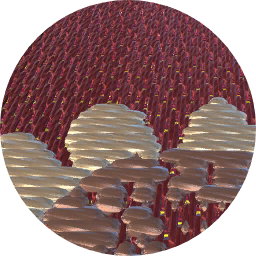Description
This tapestry is one of seven hangings at The Cloisters that depict the hunt of the unicorn, a mythical creature first mentioned by the Greek physician Ctesias in the fourth century B.C. In the Middle Ages the animal was best known for its supposed invincibility and for the therapeutic property of its horn. So strong was the belief in the horn's miraculous cures that by the twelfth century the tusks of male narwhals, a small whale native to the Arctic, came to be regarded as "unicorn horns."The Unicorn Tapestries, as the group of seven is known, were probably designed in Paris but woven in Brussels. They are first documented in 1680, when they hung in the Paris home of François VI de La Rochefoucauld. By 1728 five of them decorated a bedroom at the family's château in Verteuil, in western France. The tapestries were looted during the French Revolution but were recovered in the 1850s; by 1856 they had been restored and rehung in the château's salon. No documentation sheds light on the early history of the tapestries, including either their commission or sequence of hanging. Striking differences in dimension and composition have prompted scholars to question whether the hangings constitute one set or are, in fact, from multiple sets.The Hunters Enter the Woods, like The Unicorn in Captivity, is set against a millefleurs background: a field of dark green spangled with blossoming trees and flowers. Of the 101 species of plants represented, 85 have been identified, including the prominent cherry tree behind the hunters and lush date palm in front of the sniffing hound. The cipher "AE" that is woven into each of the Unicorn Tapestries—and repeated here five times—alludes to their original owners, who remain unknown.






























